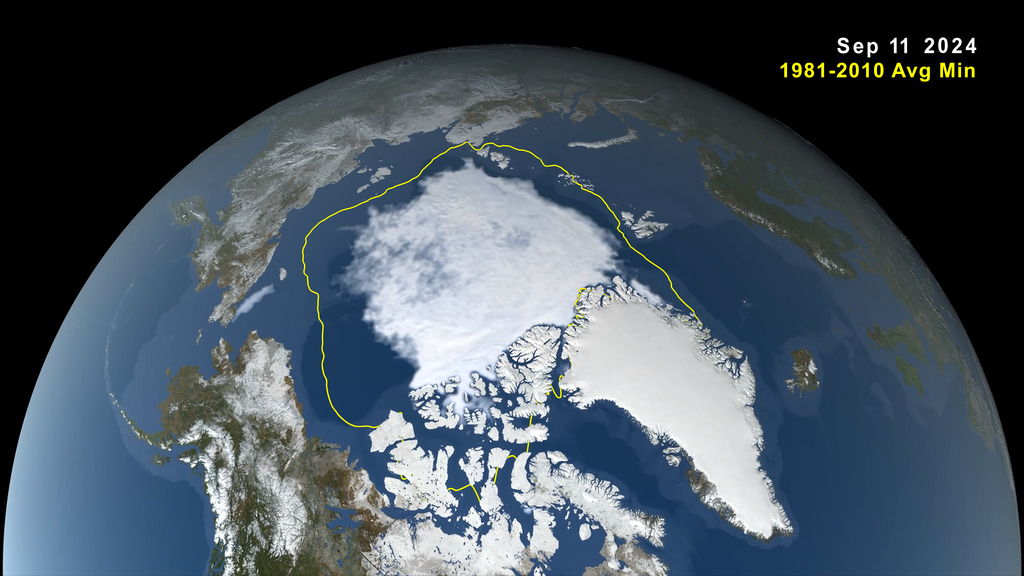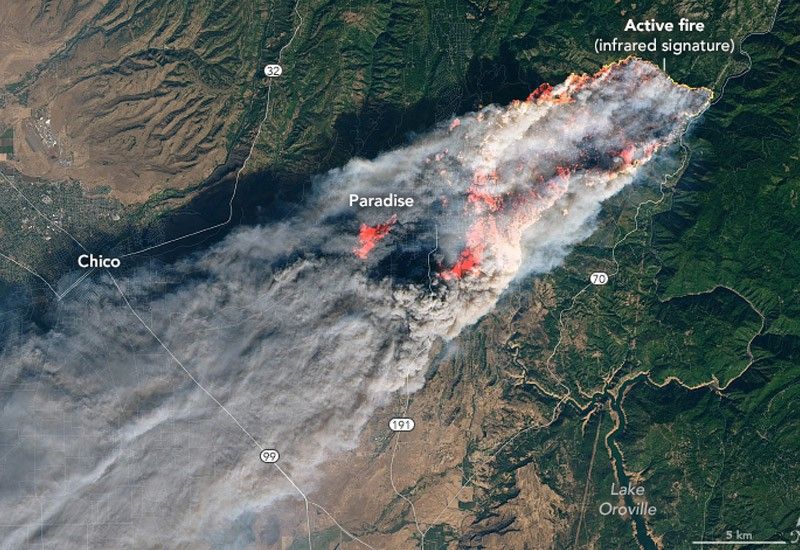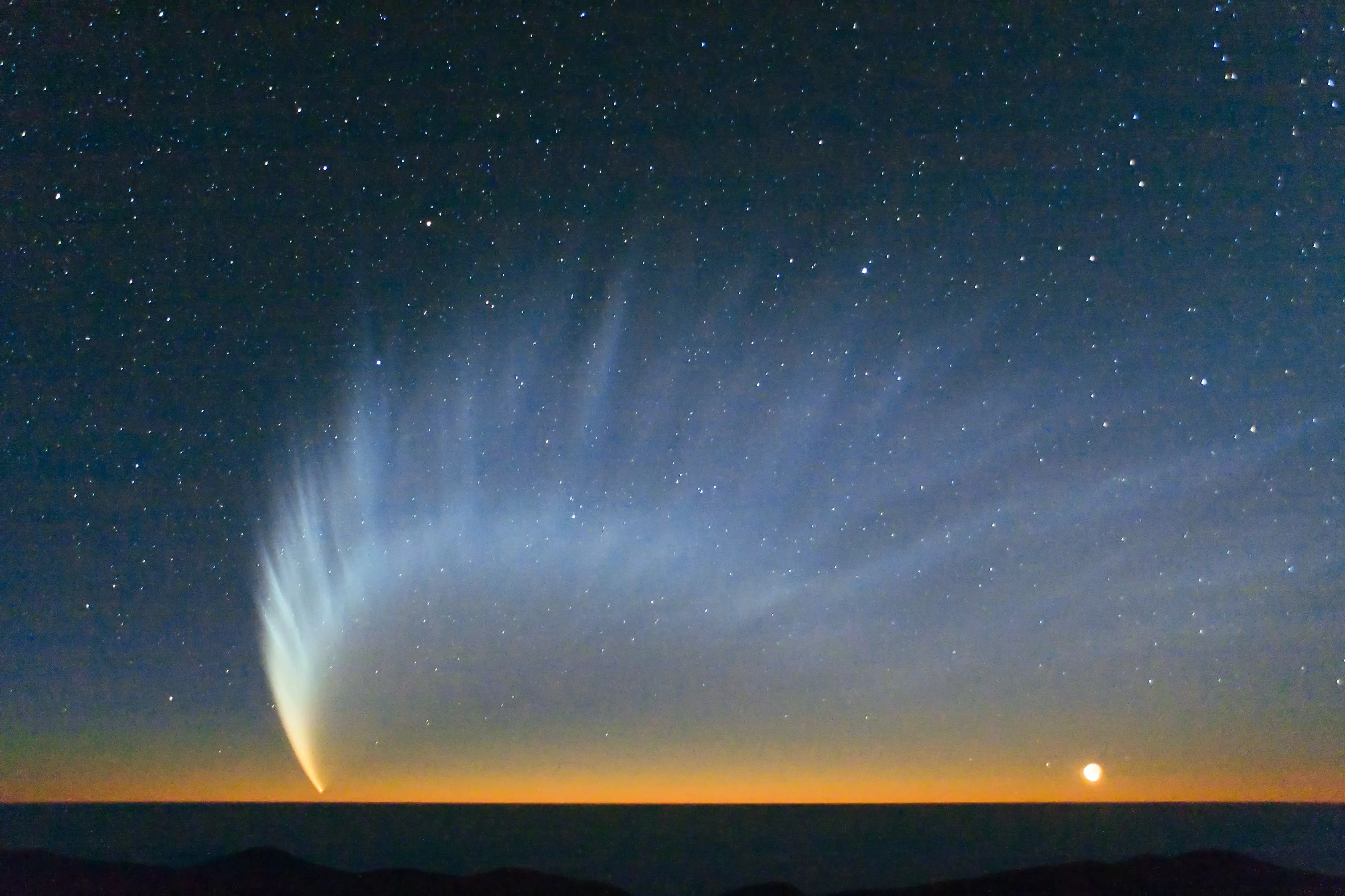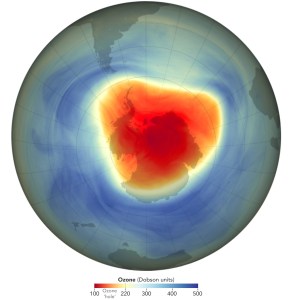
Arctic sea ice retreated to near-historic lows in the Northern Hemisphere this summer, likely melting to its minimum extent for the year on Sept.11, 2024, according to researchers at NASA and the National Snow and Ice Data Center (NSIDC). The decline continues the decades-long trend of shrinking and thinning ice cover in the Arctic Ocean.
The amount of frozen seawater in the Arctic fluctuates during the year as the ice thaws and regrows between seasons. Scientists chart these swings to construct a picture of how the Arctic responds over time to rising air and sea temperatures and longer melting seasons. Over the past 46 years, satellites have observed persistent trends of more melting in the summer and less ice formation in winter.
Credit: NASA’s Goddard Space Flight Center
Tracking sea ice changes in real time has revealed wide-ranging impacts, from losses and changes in polar wildlife habitat to impacts on local communities in the Arctic and international trade routes.
This year, Arctic sea ice shrank to a minimal extent of 1.65 million square miles (4.28 million square kilometers). That’s about 750,000 square miles (1.94 million square kilometers) below the 1981 to 2010 end-of-summer average of 2.4 million square miles (6.22 million square kilometers). The difference in ice cover spans an area larger than the state of Alaska. Sea ice extent is defined as the total area of the ocean with at least 15% ice concentration.
Seventh-Lowest in Satellite Record
This year’s minimum remained above the all-time low of 1.31 million square miles (3.39 million square kilometers) set in September 2012. While sea ice coverage can fluctuate from year to year, it has trended downward since the start of the satellite record for ice in the late 1970s. Since then, the loss of sea ice has been about 30,000 square miles (77,800 square kilometers) per year, according to NSIDC.
Scientists currently measure sea ice extent using data from passive microwave sensors aboard satellites in the Defense Meteorological Satellite Program, with additional historical data from the Nimbus-7 satellite, jointly operated by NASA and the National Oceanic and Atmospheric Administration (NOAA).
Today, the overwhelming majority of ice in the Arctic Ocean is thinner, first-year ice, which is less able to survive the warmer months. There is far, far less ice that is three years or older now,

Nathan Kurtz
Chief, NASA's Cryospheric Sciences Laboratory
Sea ice is not only shrinking, it’s getting younger, noted Nathan Kurtz, lab chief of NASA’s Cryospheric Sciences Laboratory at the agency’s Goddard Space Flight Center in Greenbelt, Maryland.
“Today, the overwhelming majority of ice in the Arctic Ocean is thinner, first-year ice, which is less able to survive the warmer months. There is far, far less ice that is three years or older now,” Kurtz said.
Ice thickness measurements collected with spaceborne altimeters, including NASA’s ICESat and ICESat-2 satellites, have found that much of the oldest, thickest ice has already been lost. New research out of NASA’s Jet Propulsion Laboratory in Southern California shows that in the central Arctic, away from the coasts, fall sea ice now hovers around 4.2 feet (1.3 meters) thick, down from a peak of 8.8 feet (2.7 meters) in 1980.
Another Meager Winter Around Antarctica
Sea ice in the southern polar regions of the planet was also low in 2024. Around Antarctica, scientists are tracking near record-low sea ice at a time when it should have been growing extensively during the Southern Hemisphere’s darkest and coldest months.
Ice around the continent is on track to be just over 6.6 million square miles (16.96 million square kilometers). The average maximum extent between 1981 and 2010 was 7.22 million square miles (18.71 million square kilometers).
The meager growth so far in 2024 prolongs a recent downward trend. Prior to 2014, sea ice in the Antarctic was increasing slightly by about 1% per decade. Following a spike in 2014, ice growth has fallen dramatically. Scientists are working to understand the cause of this reversal. The recurring loss hints at a long-term shift in conditions in the Southern Ocean, likely resulting from global climate change.
“While changes in sea ice have been dramatic in the Arctic over several decades, Antarctic sea ice was relatively stable. But that has changed,” said Walt Meier, a sea ice scientist at NSIDC. “It appears that global warming has come to the Southern Ocean.”
In both the Arctic and Antarctic, ice loss compounds ice loss. This is due to the fact that while bright sea ice reflects most of the Sun’s energy back to space, open ocean water absorbs 90% of it. With more of the ocean exposed to sunlight, water temperatures rise, further delaying sea ice growth. This cycle of reinforced warming is called ice-albedo feedback.
Overall, the loss of sea ice increases heat in the Arctic, where temperatures have risen about four times the global average, Kurtz said.

































